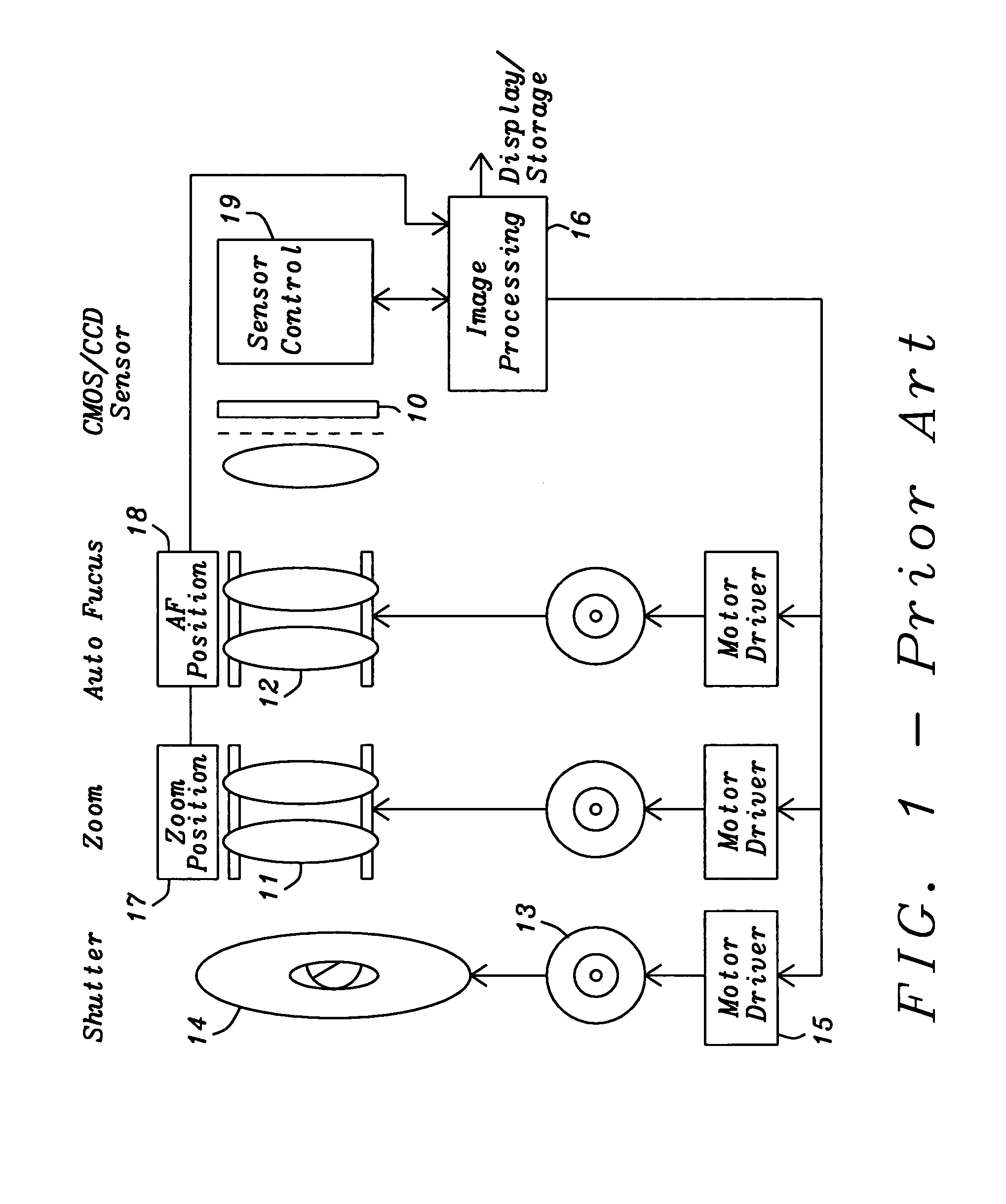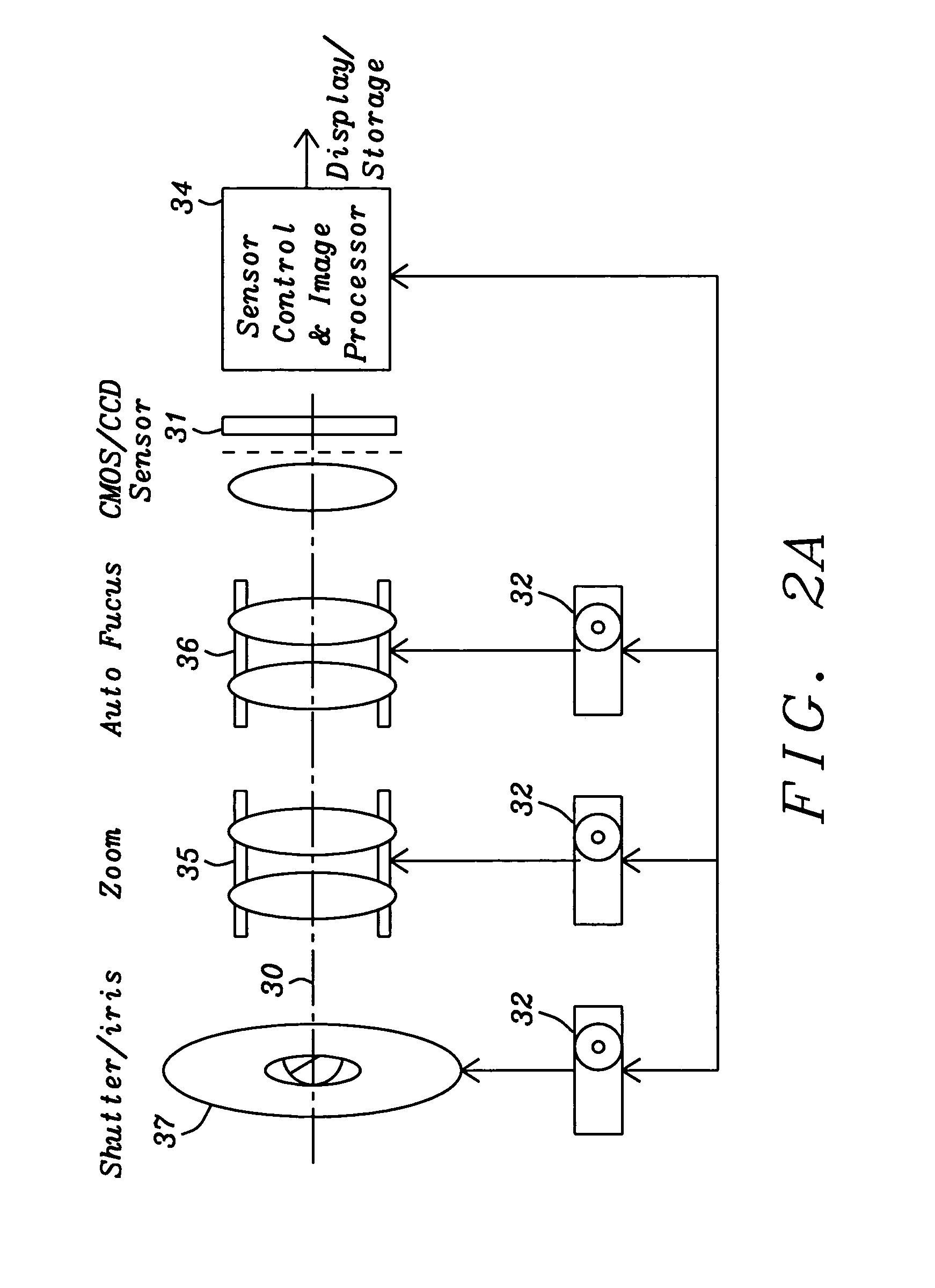Compact camera modules with Lavet stepping-motors as actuators
a technology of actuators and camera modules, applied in the direction of camera focusing arrangement, printers, instruments, etc., can solve the problems of low power consumption, low power consumption of the needed actuator elements, and the ability of power consumption to provide an adequate battery life, so as to reduce the power consumption of digital camera functions and increase battery life
- Summary
- Abstract
- Description
- Claims
- Application Information
AI Technical Summary
Benefits of technology
Problems solved by technology
Method used
Image
Examples
Embodiment Construction
[0027]In FIG. 2A is a schematic diagram of a digital camera unit of the present invention. A series of lens, comprising zoom 35 and focus 36, are centered on an optical axis 30 to focus an image onto an image sensor 31, which comprises a CCD (charge coupled device) or a CMOS image sensor. An actuator 32, comprising a horological stepper motor, is controlled by CMOS I / O signals connected from the sensor control and image processor circuitry 34. The actuator 32 controls the movement of moveable lens elements forming zoom 35 and AF (auto focus) 36 where at least one lens is moveable in each of the moveable lens elements. In the digital camera units having a shutter or iris, the actuator 32 is used to control the shutter and iris function 37.
[0028]The horological stepper motor contained within the actuator 32 uses approximately an order of magnitude less current at approximately one and one half times lower voltage, resulting in approximately thirty times lower power dissipation than th...
PUM
 Login to View More
Login to View More Abstract
Description
Claims
Application Information
 Login to View More
Login to View More - R&D
- Intellectual Property
- Life Sciences
- Materials
- Tech Scout
- Unparalleled Data Quality
- Higher Quality Content
- 60% Fewer Hallucinations
Browse by: Latest US Patents, China's latest patents, Technical Efficacy Thesaurus, Application Domain, Technology Topic, Popular Technical Reports.
© 2025 PatSnap. All rights reserved.Legal|Privacy policy|Modern Slavery Act Transparency Statement|Sitemap|About US| Contact US: help@patsnap.com



